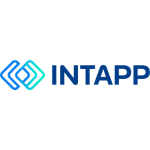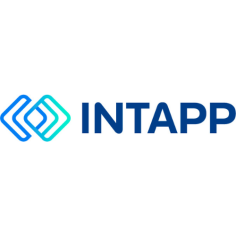Intapp: Speed to connect
Pat Archbold and Josh Clark at Intapp tell Richard Brent how managing data across all their systems in the cloud is already offering firms not only more efficiency but also clear competitive advantage
Sponsored editorial
The period of new hybrid-working likely ahead for many will be a test of law firms’ collaborative mindsets and cohesive cultures. Will they be just as capable of keeping teams and functions focused on common goals, or will this require further investment?
But it has long been highlighted that firms would benefit from being more connected in any case. Pat Archbold, vice president and industry group leader – legal, at Intapp, says: “Firms have procured new technology as they’ve added and expanded departments, but they’ve viewed the data as independent pockets for specific purposes. They often haven’t really invested in connecting the information, and so they are missing several opportunities.
“They can also be highly focused on individual performance, which means less incentive to share data and put in the necessary work to keep it up to speed – and organising taxonomy is a long-term project.”
So lawyers, and those supporting them, can effectively be walking around with their own pockets of data in their pockets – but it doesn’t have to be that way.
Josh Clark, vice president – sales engineering at Intapp, gives one example of the advantage a more sophisticated approach can yield – understanding the spectrum of client industries and emerging opportunity within them with reference to more than current revenue achievements.
“One firm that covered real estate and also healthcare was able to identify a growing trend of real-estate clients converting shopping malls into health centres. You wouldn’t necessarily think of connecting those two. But by being closer to both industries, the firm could see the opportunity to overlay another type of experience to win business in those white spaces.”
Firms have procured new technology as they’ve added and expanded departments, but they’ve viewed the data as independent pockets for specific purposes. They often haven’t really invested in connecting the information, and so they are missing several opportunities
Some are also leveraging client relationship management as a strategic shift more broadly, he explains – pulling market news about clients from external sources, for example, alongside real-time matter, time and billing information, to make recommendations about possible next steps that much more persuasively.
And alongside business development, there are some significant time savings to be made. Client billing guidelines can often be largely lost in bulging document management systems. “Some firms have an entire team to support on searching and reviewing pre-bills,” Clark continues. “However, integration of technology here can reduce the administrative burden, as well as a lot of complaints, and the likelihood of lost experience related to matters that could be leveraged for further client development later.”
Connecting with cloud
So what would a firm that delivered in a more connected fashion need from its technology? It’s notable that in late 2020 Intapp announced it would now sell its range of software as cloud solutions only (while maintaining support for on-premises versions).
Clark says: “Firms have been in business a long time – they’ve introduced a lot of technology in that time – so there is a bit of effort in moving to the cloud. But once achieved, costs erode with complexity. Bespoke comes at a cost.” For example, one firm with an industry-focused strategy such as was mentioned earlier identified a need to integrate its intake programme – getting early sight of any potential conflicts or profitability indicators – with its client development. The risk platform is therefore now moving to the cloud for that level of integrated clarity.
“The legal industry is a little behind others in cloud adoption – the conversation needs to happen firm by firm as they each have their history,” continues Clark. “But those that move to the cloud faster really can leapfrog the competition by integrating their data more effectively in that environment.”
Archbold adds that client and employee expectations of their firms is another case to consider here. If you’re investing in new teams of skilled data scientists to expand your revenue opportunities, you don’t want them to be wasting their time pulling data together – which the cloud could manage much faster.
“It makes for a much more productive data-management strategy, and as people can now increasingly work from anywhere, they won’t necessarily keep waiting and stick around. Leadership needs to think carefully about that as talent-chasing in the market continues to heat up.”
Artificial intelligence could in fact have some role in preserving a more connected firm here, he adds – not just by pushing increasingly more relevant updates out to people, at the right point in their working day, faster, but also spotting signs that a client – or even partner – may be preparing to move on to pastures new.
And finally, whichever datasets people are drawing on to play their individual parts better, the last 18 months have clearly highlighted the value of collaborative process to the connected whole.
Clark explains: “You see collaboration on proposals, matters, time and billing, concerning clients, and also with the client directly. Everyone is a part of a team, however distributed, and most likely in multiple teams. Each one needs allocation of all the right people, with the right access to the right applications and documents.
“That could mean chaos and confusion for management, but the provisioning of Microsoft Teams is a major player in bringing clarity.”
Indeed in summer 2021, shortly before its IPO, Intapp announced the acquisition of Microsoft 365-based creator of content and collaboration tools Repstor – designed to enable such governance frameworks for various work lifecycles, while at the same time enriching collaboration with more context from other connected systems.
Law firms will all need to keep people collaborating effectively – however their working patterns may change. But alongside the delivery of high-value data and empowering hard-won talent, the extent to which they do so could be yet another slice of competitive edge that marks out the more connected firm of the future.



